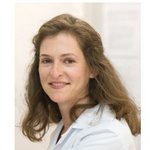One of the main focuses at IMOS is the differentiation of human pluripotent stem cells into distinct pancreatic lineages. This technology is not only applied to study physiological processes during development and tissue homeostasis, but also to unravel pathological mechanisms during various diseases. IMOS researchers have created a rapid and efficient reprogramming platform together with our close collaborator Prof. Stefan Liebau (Director Neuroanatomy and Developmental Biology Tübingen University) that allows us to reprogram keratinocytes from plucked hairs of diseased individuals and healthy controls. This technology has been successfully employed in several studies where the generated induced pluripotent stem cells were differentiated into endodermal and ectodermal derivatives. In particular, the intimate connection of IMOS with the Clinical Division of Interdisciplinary Pancreatology (SIP) at the Department of Internal Medicine as well as the Center for Rare Liver, Intestinal and Pancreatic Diseases (ZSLDPE) provides a unique access to appropriate patient samples to generate induced pluripotent stem cells. In addition, IMOS has established an (inter)national network to obtain reprogrammable somatic cell material from patients suffering from hereditary pancreatic diseases. Thereby, IMOS succeeded in establishing a comprehensive cell bank with pluripotent stem cells derived from patients with familial pancreatic cancer, hereditary chronic pancreatitis and a distinct set of pancreatic syndromes including cystic fibrosis and the Johanson-Blizzard syndrome. In addition to reprogramming of patient-specific mutations, we have established rapid gene editing workflows that allow the highly efficient generation of specific point mutations, small and large deletions, knockouts, and knock-ins using CRIPSR/Cas9 and transposon-based systems. Hereby, we have not only repaired patient-specific mutations in iPSCs but have engineered a whole set of cancer-specific mutations in human embryonic stem cells which allow us to dissect the earliest mechanisms of pancreatic cancer formation in genotype and cell-type specific questions.



Research Topics
While the generation of bona-fide insulin-producing ß-like cells is of major interest for diabetic research, the specification of pancreatic progenitors into acinar and ductal cells is a process that has not been explored in depth. 95% of the pancreas, however, are exocrine cells, and the most severe diseases in the pancreas such as pancreatitis and pancreatic ductal adenocarcinoma arise from acinar and ductal cells. Maturation into acinar and ductal cells is consequently an essential prerequisite to establish truthful in vitro model systems for various pancreatic diseases. In our first efforts, we have designed an approach to guide the development of pancreatic organoids (POs) from human PSCs that resemble cells of acinar and ductal origin. Comprehensive phenotyping of these POs revealed the resemblance of several ultrastructural, transcriptional and functional hallmarks of human exocrine tissue. After orthotopic transplantation, these POs formed pancreatic duct-like and acinar-like tissue without signs of transformation. The usefulness of the system was demonstrated by phenotyping pancreatic facets of cystic fibrosis with patient-specific iPSCs and a preclinical drug testing.

These efforts to mature pancreatic progenitors in 3D organoid models paved the way to build our recent innovative early stage pancreatic cancer model. While genetically engineered mouse models (GEMMs) are hard-to-access, ethically debated, time-consuming, and limited to a murine background, human-patient-derived organoids (PDOs) only mirror the end-stage of the disease. In contrast to such existing models, the generation of pancreatic duct-like organoids from human pluripotent stem cells was successfully used to model the onset and progression of human pancreatic cancer in vitro and in vivo. For this, we have on the one hand developed a protocol to differentiate PSCs into virtually pure duct-like cells and on the other hand have established a set of tumor suppressor mutations and inducible expression of oncogenes such as KRASG12D or GNASR201C in PSCs. The graphical abstract of our recent publication outlines the characterization and application of this ductal organoids to recapitulate oncogene-dependent dysplasia in vitro and corresponding tumorigenesis in vivo with formation of IPMN-like structures after expression of GNASR201C and pancreatic adenocarcinoma-like tumors after expression of KRASG12D. When we combine these tools with samples from our biobank of cancer predisposing syndromes, we have a unique resource for developing personalized therapies.

IMOS aims at developing innovative model systems by integrating recent advances of bioengineering approaches, such as microfluidics and organ-on-chip-technologies but also ex vivo tissue scaffolds. The possibility of miniaturization, automation, and parallelization on chip holds a great promise for pluripotent stem cell differentiation and functional analyses. In a collaborative project, we transferred our ductal differentiation system to microwell chips followed by single-cell transcriptomics. In the future, we aim to develop new microfluidic chips for improved model system and preclinical drug testing. In a complementary approach better recapitulating structural changes during cancer transformation, we have implemented an ex vivo porcine urinary bladder (PUB) organ culture model providing an advanced scaffold with time-resolved access to engrafted pancreatic-like tissue. In the future, we aim at further improving our model systems by microfluid chip technology, organ culture models, but also bioprinting of non-epithelial cell components. Hopefully, these model systems will finally contribute to the identification of novel diagnostic biomarkers and stratified treatment regimens for various pancreatic diseases.




